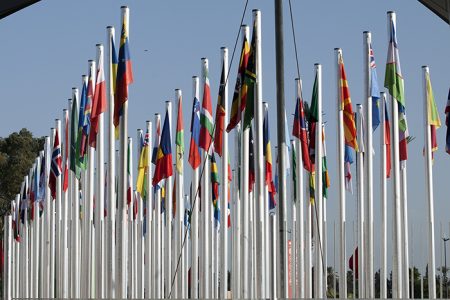November 17, 2016 – All is not lost in the fight to move the world away from fossil fuels and reduce carbon pollution despite Donald Trump becoming the American president elect. Here are just a few of the positives we are seeing around the globe:
- In 2015 the world spent $329 billion U.S. on clean energy projects.
- 190 countries post the 2015 Paris Agreement posted climate action plans covering 95% of total global emissions.
- We built a third-more renewable capacity than in 2014 which in itself was a record year with more than half of all energy investments renewable.
- Cost of solar panels over five years fell by 75%.
- Cost of batteries for electric vehicles since 2009 fell 50%.
- Wind energy reached grid price parity with thermal and other electricity generating sources in more than 50 countries.
- In Chile, solar power was half the cost of coal-fired energy.
- Costa Rica ran the entire country for 113 days straight on renewable energy sources only.
- Globally a half-million solar panels were installed daily.
- China was building 2 wind turbines per hour.
- Texas received 40% of its electricity during winter days from installed wind power.
- The number of electric charging ports in Japan surpassed the number of gas station pumps for the first time.
- The European Union passed regulations to make every new house built include a charging station.
- Russia mandated gas stations to include at least one charging station per location.
- The U.S. announced an electric car interstate transportation network covering over 40,000 kilometers.
- Canada announced plans to implement a progressive national carbon tax beginning in 2018.
- China announced merging its 7 pilot carbon cap and trade tests into a national program in 2017.
- Germany pledged 2.7 billion Euros this year to finance international climate change adaptation and mitigation projects in the Developing World. Amount to grow to 4 billion Euros by 2020.
- Philips, the Dutch electronics company, demonstrated new lighting technology that would reduce electricity consumption by 15%, and reduce greenhouse gas emissions by 5%.
- 40 countries agreed to a global fuel economy initiative to reduce CO2 emissions.
- 173 airports created a carbon accreditation program focused on creating carbon neutral facilities with 36% of air passengers now traveling through one of these sites.
- Saskatchewan Boundary Dam Project sequestered over 800,000 tons of CO2 so far in 2016.
- Quest Project reached a milestone of 200,000 tons of sequestered CO2 in one month.
- 441 cities around the world committed to action to reduce local sources of greenhouse gas emissions and enhance resilience to climate change with transparent reporting to the public.
- A one for all campaign was announced at COP22 meetings in Morocco in the last week to make major investments in developing states to end energy poverty before 2030.
- A number of billionaires led by Bill Gates pooled $20 billion U.S. to invest in higher-risk innovative clean energy companies.
COP22 in Marrakech preceded and has followed the U.S. election. Its proceedings conclude at the end of this week. For the attendees the victory by Donald Trump changed the dynamic from business as usual to one of renewed purpose to implement negative emission strategies and technologies to speed up global efforts to decarbonize. Trump’s triumph is being viewed as a catalyst for smaller nations to step up and take charge. Overall there appears to be renewed commitment to meet global carbon neutrality by 2050, 34 years from now. The community of nations remains committed to phase out coal-fired power, to attain 70 to 80% of electricity from renewable sources, and to implement carbon capture and sequestration (CCS) eliminating emissions by as much as 16% all by 2030. It is an ambitious plan and the question in many minds now is will we need the United States on board?
For Donald Trump, as a business person, his frame of mind is not oriented to sustainability. His mindset doesn’t focus on global impacts. Because he is not in the energy field he doesn’t have experience looking at the issue of carbon risk and its impact on his business model. But now he has to head up a government with global responsibilities. His country is the world’s largest economy and its second largest carbon emitter. Now he has to look at carbon risk and its impact on relationships with other nations. That means a change in mindset is needed.
The question is can he do it? If he is incapable will his actions stop global progress on carbon emission reductions?
There is a growing consensus that at his best he may suddenly grasp the difference between business and government and begin to address global consequences of ignoring the scientific evidence and the actions of other nations. At worst he may remain a business person who has no concept of global risk. That person can appoint the wrong people in positions of authority. That person can end the United States involvement in global greenhouse gas elimination initiatives, climate mitigation and adaptation. The world’s best hope is that the hiatus of American non-involvement on the climate file will only last four years. Then a new American president can rejoin the world community but at a significant bump up in cost that will probably amount to trillions of dollars.











